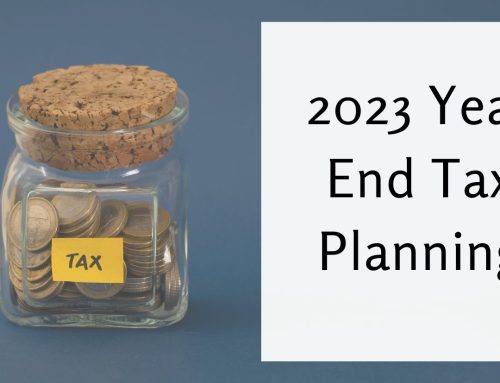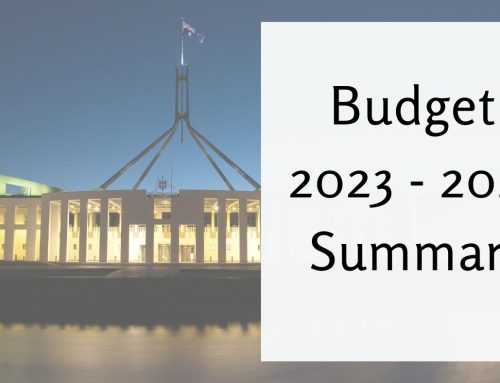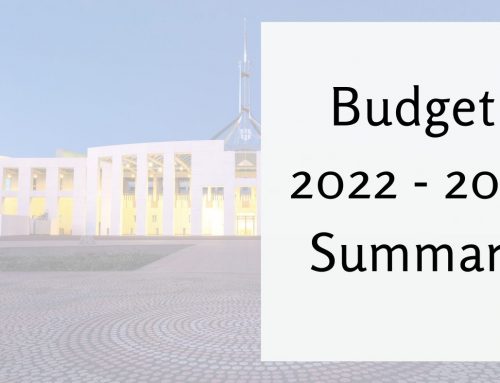Division 7A of the Income Tax Assessment Act 1936 (ITAA 1936) sets out the rules pertaining to how a loan, an advance, the provision of financial accommodation or the value of benefits (such as the private use of assets owned by the company) to shareholders or associates of shareholders of private companies will be treated for income tax purposes. Essentially, if you comply with the provisions of Division 7A then the value will be treated as a loan and repayable (together with interest) over a period of either 7 years (if unsecured) or 25 years (if secured by the provision of a mortgage over real property that is equal to at least 110% of the value of the loan).
To remain compliant the loan will need to be in writing, interest on the loan charged at no less than the ATO benchmark interest rate as published each year, and the minimum repayments made each year. Failure to comply with Division 7A will result in the shareholder or associate being deemed to be in receipt of a dividend. This dividend will be unfranked and will also result in the company losing franking credits equal to the franking credit that would have otherwise attached to the dividend had it be able to be franked.
In October 2018 Treasury brought out a consultation paper on Division 7A and set out its position on how the operation of Division 7A could be enhanced. The ordinary meaning of the word enhanced means to improve or make better. While it will enhance the tax revenue collection for the Government, it will not enhance the position of the taxpayer in majority of circumstances. Below is a summary of the changes proposed by Treasury:
1. Simplified Loan Rules
The proposed loan rules is based around the introduction of a single 10 year loan model with the abolition of the choice between a 7 year unsecured loan and a 25 year secured loan. The features of the 10 year loan model will be as follows:
- Maximum term of 10 years
- Annual benchmark interest rate will be based on the Small Business Variable Other Overdraft Indicator Lending Rate most recently published by the RBA prior to the start of each income year
- No requirement for a formal written loan agreement. However, written or electronic evidence showing that the loan was entered into must exist by the lodgement day of the private company’s income tax return. The evidence must show the parties to the loan, details of the date of the loan together with evidence of its execution and binding nature on the parties and the terms of the loan (which must comply with the proposed new rules)
- Minimum yearly repayment amount must consist of both principal and interest. The principal component is a series of equal annual instalments over the term of the loan. The interest component is the interest calculated on the opening balance of the loan each year using the ATO benchmark interest rate set out above.
- Where the minimum repayment has not been made in full, any shortfall will give rise to a deemed dividend for that year
- Interest is calculated for the full income year regardless of when the repayment is made during the year. Whether the repayment is made on the 1st July or the 30th June, the interest charged on the loan for that financial year will be the same.
Interestingly, Treasury state in the consultation paper that the “The new ten year loan model is simpler than the current apportionment model and more closely aligned to commercial practice for principal and interest loans.” Other than possibly loan sharks, I have very rarely seen a commercial loan agreement requiring me to pay interest based on a loan balance on the first day of a tax year even though I am repaying 1/10th of the principal back during the year. For example, under the proposed new rules if I owe $100,000 on 1st July and the interest rate is 8.25% I am required to pay $8,250 in interest. This would be acceptable if I were to make the repayment on 30th June each year. However, if I were to make a principal repayment on 1st July I still have to pay $8,250 in interest even that the balance of the loan for 364 days of the year will be $90,000. This costs me $825 in interest that I would not otherwise have to pay under a commercial arrangement.
2. Transitional Rules
Treasury have proposed that transitional rules will be introduced to allow taxpayers that have existing 7 or 25 year loans to transition to the new 10 year loan model. Even the transitional rules are drafted in a manner to maximise revenue for the Government. Rather than the transitional rules simply grandfathering existing complying Division 7A loans, Treasury, in their infinite wisdom, have developed a transitional model to not extend the term of the 7 year loans but to shorten the term of the 25 year loan.
2.1 7 Year Unsecured Loans
All complying 7 year unsecured loans in existence as at 30 June 2019 must comply with the new proposed loan model and new benchmark interest rate to remain complying but will retain their existing outstanding loan term. For example, if $100,000 is owing as at 30 June 2019 and the remaining term of the loan is 4 years then the loan will continue to be required to be repaid in full in 4 years but the $100,000 will now be required to be repaid as a principal repayment of $25,000 per year together with interest calculated on the balance owing on 1 July each year.
Treasury have taken all of the elements from the proposed new loan model that will maximise revenue during the remaining term but failed to give the taxpayer the benefit of the additional loan term.
2.2 25 Year Secured Loans
Given that Treasury have decided not to give the benefit of the additional loan term to those who are currently using the 7 year unsecured loan you may be forgiven for thinking that those on a 25 year secured loan would get the benefit of retaining their remaining loan period. Unfortunately, you would be wrong. Instead, Treasury have proposed that:
+ All complying 25 year secured loans in existence as at 30 June 2019 will be exempt from the majority of the changes until 30 June 2021. However, the interest payable on these loans for the 2020 and 2021 tax years must equal or exceed the new benchmark interest rate
+ On 30 June 2021 the outstanding value of the loan will give rise to a deemed dividend unless a complying loan agreement is in place prior to the lodgement day of the 2021 company tax return. The first repayment will be due in the 2022 tax year.
3. Pre 4 December 1997 Loans
When Division 7A initially came into being, all loans in existence as at 3 December 1997 were quarantined and excluded from the operation of Division 7A (save for some circumstances that could cause these pre Division 7A loans to be freshened up into post Division 7A loans). Many have been either making small repayments to evidence the fact that these pre 1997 loans have remained on foot or confirmed/acknowledged in writing that the pre 1997 loan was still owed. This was done to ensure that the loan was not statute barred or forgiven which would have otherwise caused the loan to be freshened up to a Division 7A loan.
Twenty-one years on and Treasury now want to shift the goal posts. Treasury have proposed that these loan balances be taken to be the provision of financial accommodation as at 30 June 2021 with the taxpayer having until the lodgement day of the 2021 company tax return to either pay out the loan in full or put in place a complying loan agreement. Failure to do either will cause the amount to be treated as a deemed dividend in the 2021 income year.
4. Concept of Distributable Surplus
Under the current rules if a company makes a loan to a shareholder or associate but the company does not have a distributable surplus (i.e. in simple terms, the company’s liabilities are greater than its assets) then the loan is quarantined and will not be subject to the operation of Division 7A.
The proposed amendments to Division 7A by Treasury look to remove the concept of distributable surplus. This treats shareholders and associates of all private companies the same. The only issue with this concept is that if you have a net deficiency of assets then you cannot pay a dividend under the Corporations Act and you are likely to have a deemed dividend under Division 7A. This then results in a franking debit in the company’s franking account which causes the company to lose some of its franking credits or, worse, could cause the company to have a franking account deficit.
5. Unpaid Present Entitlements
Where a trust (such as a family or discretionary trust) makes a company entitled to a share of its income or profits for a year and the Trust does not actually pay the amount distributed to the private company then this gives rise to an Unpaid Present Entitlement (UPE).
Treasury has proposed that all UPEs on or after 16 December 2009 and on or before 30 June 2019 that have not already been put on complying loan terms (or have not already be deemed to be a dividend) will need to be put on complying terms by 30 June 2020. The first repayment for such loans will be due in the 2020 tax year. Any amounts outstanding that have not been put on complying loan terms will be by the end of the 2020 tax year will result in a deemed dividend for the outstanding amount of the UPE.
Any UPE arising on or after 1 July 2019 will need to be either paid to the private company or put on complying loan terms under the new 10 year loan model prior to the company’s lodgement day – otherwise the will be deemed dividends.
6. Self Correction of Division 7A Breaches
One positive for taxpayers from the consultation paper was the proposal to allow taxpayers to self correct in circumstances where there was an inadvertent breach of Division 7A. This will allow a taxpayer to voluntarily correct a breach without penalty.
Under the present system Section 109RB provides the Commissioner with a discretion to disregard a deemed dividend or to allow it to be franked if the dividend arose as a result of an honest mistake or inadvertent omission. When applying to the Commissioner for an exercise of discretion the ATO must consider a range of factors. The problem with Section 109RB is that taxpayers can voluntary disclose the breach and request the Commissioner to exercise a discretion to allow them to correct the breach. While the taxpayer may consider that they have a good case, the ATO may simply turn around and deny the request. The taxpayer then finds him or herself with a deemed dividend and a substantial tax bill together with penalties and interest. Given this potential outcome, are you likely to throw yourself at the mercy of the ATO. Based on our recent experience with ATO auditors, the answer is clearly no. This is why a self correction mechanism would be a sensible inclusion into the legislation.
Under the proposed changes, eligibility to qualify for self correction will require that:
- The of Division 7A was an inadvertent breach;
- Appropriate steps have been taken as soon as practicable (i.e. within 6 months after identifying the error unless the Commissioner allows further time) to ensure that the affected parties are placed in the position they would have otherwise been in had they complied fully with their Division 7A obligations;
- The taxpayer has taken or is taking reasonable steps to identify and address any other breaches of Division 7A.
To self correct the proposed changes will require the eligible taxpayer to convert the loan to a complying loan agreement on the same terms that would have applied had the loan agreement been entered into when it should have been and make catch up payments of the principal and interest that would have been payable as prior year minimum yearly repayments had they complied with their Division 7A obligations.
7. Amendment Period – Division 7A
Treasury have also proposed to increase the period of review for any and all Division 7A transactions from 4 years to 14 years. The proposed commencement date of this new review period is 1 July 2019.
The proposed changes to Division 7A are significant and we advise that we will be in contact to discuss the impact of these proposed changes on your tax position now and moving forward as well as planning for these changes.
Should you have any queries, please do not hesitate to contact our office.





